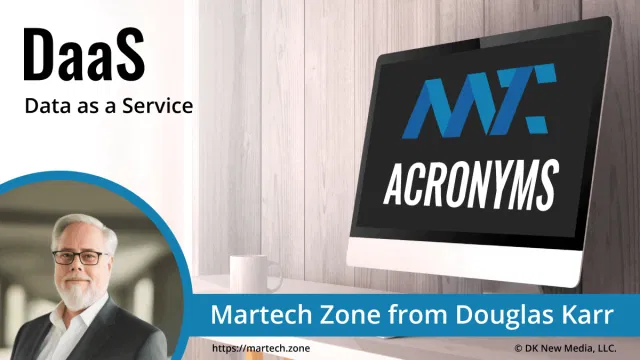Acronyms Beginning With D
Sales, marketing, and technology acronyms that begin with D
-

D2C
Also abbreviated as DTC, D2C is a retail model where manufacturers or brand owners sell directly to consumers, eliminating traditional intermediaries such as wholesalers, distributors, and retailers. This model fosters a closer relationship between the brand and its customers, offering…
-

D2D
A sales strategy where salespeople or company representatives directly approach potential customers at their homes or businesses to sell products or services. Here are some key points about D2D: Direct interaction: Salespeople engage face-to-face with potential customers, allowing for a…
-

DA
A search engine ranking score developed by Moz that predicts how likely a website is to rank on search engine result pages (SERPs). Domain authority characteristics include: Scoring: DA scores range from 1 to 100, with higher scores corresponding to…
-

DaaS
A cloud-based service model that provides users with on-demand access to data and data management tools. It enables organizations to access, analyze, and leverage data without the need for significant in-house infrastructure or resources. By abstracting the complexities of data…
-
DAB
A digital radio broadcasting technology that was developed to provide improved audio quality and more efficient use of radio spectrum compared to traditional analog radio broadcasting systems, such as AM and FM. DAB uses digital signal processing and compression techniques…
-
DAB+
An enhanced version of the original DAB standard, which was developed to provide better audio quality and more efficient use of radio spectrum compared to traditional analog radio broadcasting systems, such as AM and FM. DAB+ uses a more advanced audio…
-

DAI
A sophisticated technology used in digital advertising to dynamically insert ads into audio and video content. This method enhances the relevance of advertisements for each viewer or listener by considering various factors like location, viewing or listening platform, and demographic…
-

DAI
A subfield of artificial intelligence (AI) that focuses on building systems composed of multiple intelligent agents distributed across different environments or computing nodes. These agents operate independently but coordinate to solve problems that require collective intelligence or that are too…
-

DALL-E
DALL·E 2 is an advanced AI system developed by OpenAI that has the ability to generate realistic images and art from textual descriptions. It can use a natural language description as input and produce corresponding images as output. DALL·E is…
-

DAM
A system that stores, organizes, and manages digital assets, such as images, videos, audio files, documents, and other media content. DAM systems help organizations efficiently manage and distribute digital content across various platforms and channels. Key features and benefits of…







